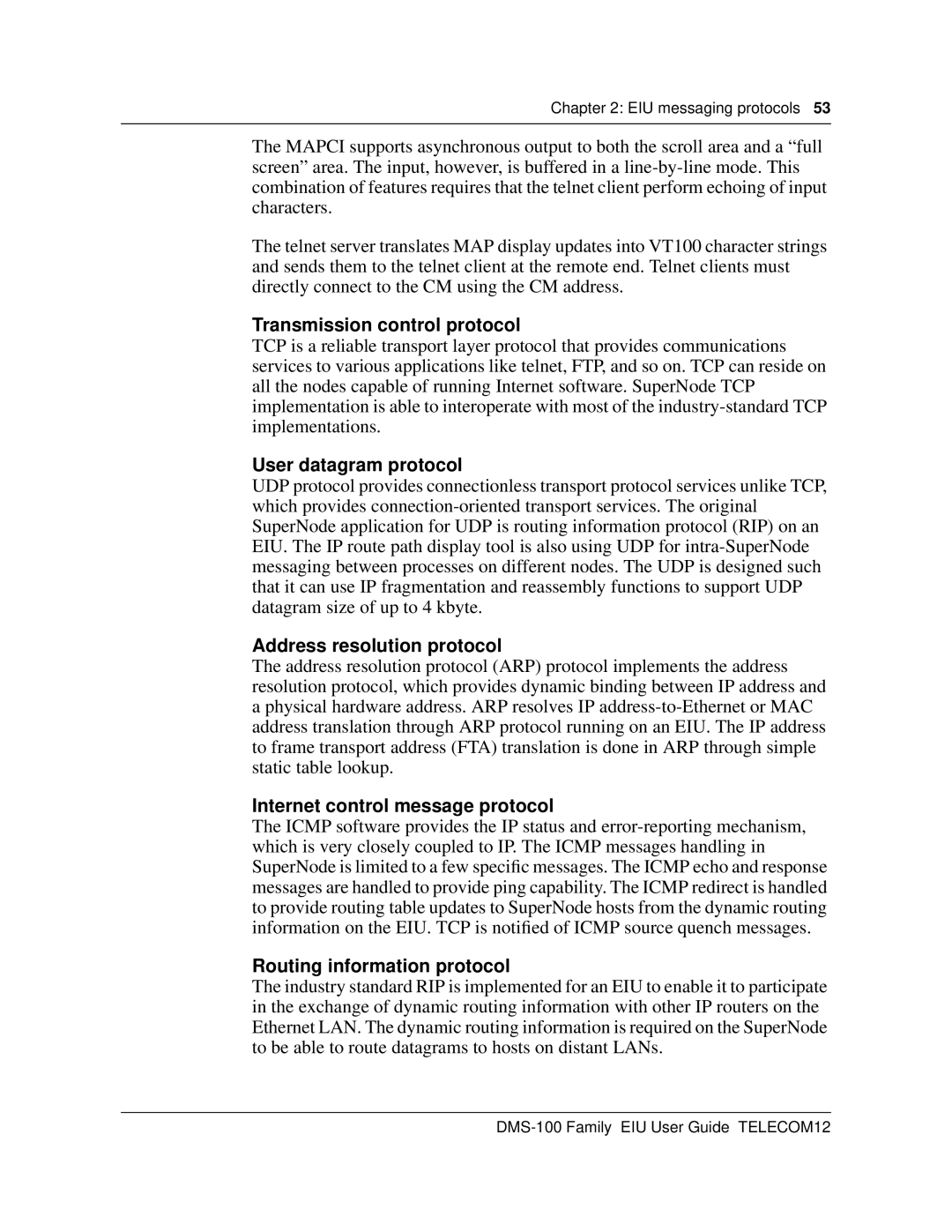
Chapter 2: EIU messaging protocols 53
The MAPCI supports asynchronous output to both the scroll area and a “full screen” area. The input, however, is buffered in a
The telnet server translates MAP display updates into VT100 character strings and sends them to the telnet client at the remote end. Telnet clients must directly connect to the CM using the CM address.
Transmission control protocol
TCP is a reliable transport layer protocol that provides communications services to various applications like telnet, FTP, and so on. TCP can reside on all the nodes capable of running Internet software. SuperNode TCP implementation is able to interoperate with most of the
User datagram protocol
UDP protocol provides connectionless transport protocol services unlike TCP, which provides
Address resolution protocol
The address resolution protocol (ARP) protocol implements the address resolution protocol, which provides dynamic binding between IP address and a physical hardware address. ARP resolves IP
Internet control message protocol
The ICMP software provides the IP status and
Routing information protocol
The industry standard RIP is implemented for an EIU to enable it to participate in the exchange of dynamic routing information with other IP routers on the Ethernet LAN. The dynamic routing information is required on the SuperNode to be able to route datagrams to hosts on distant LANs.
